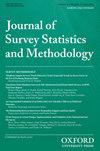网络邮件模式对护理体验调查回复率和回复的影响:随机试验结果
IF 1.6
4区 数学
Q2 SOCIAL SCIENCES, MATHEMATICAL METHODS
引用次数: 0
摘要
患者体验调查对于评估医疗服务提供者的绩效至关重要。然而,随着时间的推移,答复率不断下降,而且答复是否反映了所有接受护理的患者的观点也引起了人们的关注。解决这些问题的一种建议方法是基于网络的调查管理,但这种模式尚未在安宁疗护环境中进行过研究。我们测试了在这种独特的环境中实施护理体验调查的连续网络邮件模式,在这种环境中,病人去世后,家庭护理者会做出回应。在全美 56 家临终关怀机构接受护理的 15,515 名患者中,有 15,515 名患者在 2021 年 3 月至 8 月期间去世,我们对这些患者的护理人员进行了抽样调查,并随机选择了四种调查模式中的一种:纯邮件、纯电话、邮件-电话(邮件和电话随访)或网络-邮件(通过电子邮件发送网络调查邀请函和邮件随访)。31.3%的抽样合格护理人员拥有电子邮件地址。与纯邮件(估计回复率 = 35.1%)相比,网络邮件(39.7%)和邮件-电话(45.3%)的回复率明显较高,而纯电话(31.5%)的回复率则明显较低。在没有电子邮件地址的护理人员中,网络邮件的回复率与纯邮件的回复率相似(35.2% 对 34.3%),但在有电子邮件地址的护理人员中,网络邮件的回复率要高得多(49.6% 对 36.7%)。在 27 个评价项目中,有 26 个项目的网络邮件受访者与邮件受访者的经历相似。在符合条件的护理人员抽样调查中,患者/护理人员的一些特征因护理人员是否拥有电子邮件地址而有所不同,但网络邮件和纯邮件受访者在任何特征上都没有差异。网络邮件模式对于调查遗属护理人员的护理经验是可行的,其回复率大大高于单一模式,对于拥有电子邮件地址的护理人员比例较高的临终关怀机构,其收益也会增加。研究结果可能适用于其他敏感话题的调查以及偏好异步调查模式的人群。本文章由计算机程序翻译,如有差异,请以英文原文为准。
Effects of a Web–Mail Mode on Response Rates and Responses to a Care Experience Survey: Results of a Randomized Experiment
Patient experience surveys are vital to evaluating healthcare provider performance. However, declining response rates over time and questions about whether responses reflect the perspectives of all patients under care have raised concerns. One proposed approach to address these concerns is web-based survey administration, a mode that has not been studied in the hospice setting. We tested a sequential web–mail mode for administering a care experience survey in this unique setting, where family caregivers respond after the patient dies. Sampled caregivers of 15,515 patients who died March–August 2021 while receiving care from 56 hospices across the US were randomized to one of four survey modes: mail-only, telephone-only, mail–telephone (mail with telephone follow-up), or web–mail (email invitation to a web survey with mail follow-up). Email addresses were available for 31.3 percent of sampled eligible caregivers.
Relative to mail-only (estimated response rate = 35.1 percent), response rates were significantly higher for web–mail (39.7 percent) and mail–telephone (45.3 percent) and significantly lower for telephone-only (31.5 percent). The web–mail response rate was similar to the mail-only response rate among caregivers without email addresses (35.2 versus 34.3 percent), but substantially higher among caregivers with email addresses (49.6 versus 36.7 percent). Web–mail and mail-only respondents reported similar experiences for 26 of 27 evaluative items. Among eligible sampled caregivers, several patient/caregiver characteristics differed by caregivers’ email address availability, but web–mail and mail-only respondents did not differ on any characteristic. A web–mail mode is feasible for surveying bereaved caregivers about care experiences, producing substantially higher response rates than single-mode approaches, with increasing benefits for hospices with higher proportions of caregivers with email addresses. Findings may be applicable to surveys of other sensitive topics and to populations that prefer asynchronous survey modes.
求助全文
通过发布文献求助,成功后即可免费获取论文全文。
去求助
来源期刊
CiteScore
4.30
自引率
9.50%
发文量
40
期刊介绍:
The Journal of Survey Statistics and Methodology, sponsored by AAPOR and the American Statistical Association, began publishing in 2013. Its objective is to publish cutting edge scholarly articles on statistical and methodological issues for sample surveys, censuses, administrative record systems, and other related data. It aims to be the flagship journal for research on survey statistics and methodology. Topics of interest include survey sample design, statistical inference, nonresponse, measurement error, the effects of modes of data collection, paradata and responsive survey design, combining data from multiple sources, record linkage, disclosure limitation, and other issues in survey statistics and methodology. The journal publishes both theoretical and applied papers, provided the theory is motivated by an important applied problem and the applied papers report on research that contributes generalizable knowledge to the field. Review papers are also welcomed. Papers on a broad range of surveys are encouraged, including (but not limited to) surveys concerning business, economics, marketing research, social science, environment, epidemiology, biostatistics and official statistics. The journal has three sections. The Survey Statistics section presents papers on innovative sampling procedures, imputation, weighting, measures of uncertainty, small area inference, new methods of analysis, and other statistical issues related to surveys. The Survey Methodology section presents papers that focus on methodological research, including methodological experiments, methods of data collection and use of paradata. The Applications section contains papers involving innovative applications of methods and providing practical contributions and guidance, and/or significant new findings.

 求助内容:
求助内容: 应助结果提醒方式:
应助结果提醒方式:


